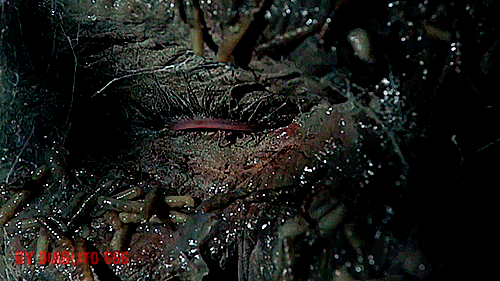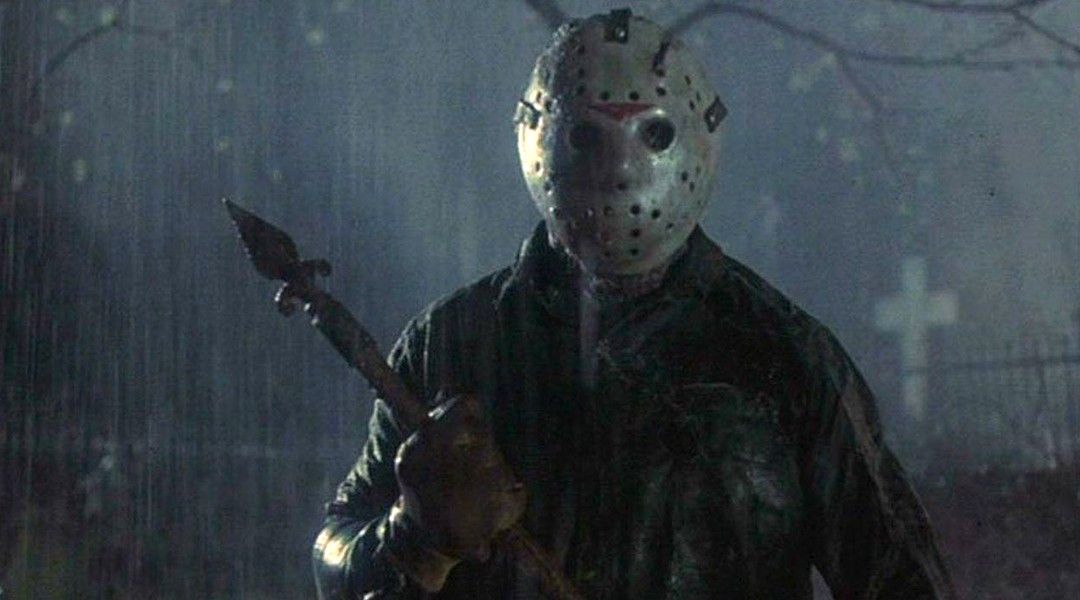Part 6: Sam Subverts Slasher Sequel Syndrome! (Cont’d)
Excerpt from Slash! A History of Horror Films, by Ima Fuller Bludengore
The success of
Friday the 13th Part 5: Jason’s Legacy immediately spurred the greenlighting of a 6th part to follow on from the events of the prior film. However, the producers were in a bit of a quandary: while the crossover success had been spectacular, the core Friday the 13th fandom was divided over the “Tommy is the new Jason” angle. Some fans liked the new direction and the possibility that “Jason” could become a heritable position, while others were saying “we want the real Jason back”.
Complicating things further for producer Don Behrns, who had taken over from Tim Silver, was the fact that director Sam Raimi had no desire to direct another Friday the 13th and was instead entertaining multiple offers from multiple studios. Behrns brought in director Tom McLoughlin to take over, but also insisted that McLoughlin try to “quote” the cinematography and tone of the Raimi film. McLoughlin was somewhat nonplussed by this “interference”, but with only the Indy horror film
One Dark Night under his belt he was in no position to argue.
Not this, but it has reflections of it
McLoughlin liked Raimi’s take, but he also wanted to stand out on his own and resented being pressured. “Honestly, I would have been happy to follow in Sam’s footsteps, and yet getting forced to do so rankled me, so I became determined to make the picture my own as well.” McLoughlin wanted to bring in pieces of the old Universal Pictures monsters of old, making Tommy-as-Jason into a lumbering, nigh-unstoppable force. He penned a draft that saw Tommy escape from the Pinehurst asylum, dig up Jason’s corpse, and worship it as a god, taking demonic strength from it.
And then Behrns threw him another curveball just days before principal photography was to begin. After a tumultuous panel discussion at Fangoria's Weekend of Horrors where the divided fandom made their opinions known, he gave McLoughlin the incongruous request “could you find a way to bring back Jason without, you know, bringing back Jason?”
“It was an impossible task,” said McLoughlin, “two contradictory states existing at the same time, like Schrodinger’s Cat. And anyone up on their quantum physics knows that it’ll ‘collapse’ when observed.”
What could possibly go wrong digging up the corpse of a killer on a dark and stormy night? (Image source “ameba.jp”)
So, McLoughlin hastily rewrote the script to have Tommy escape and dig up Jason’s body, but with the intent to destroy it in order to make the “nightmares and impulses” end. He digs up the corpse, smashes it, and burns it, but the voices still talk to him. Finally, impulsively, he takes the ashes, mixes them with water, and drinks them, certain in his manifest delusions that this will somehow destroy Jason once and for all. Instead, Tommy
becomes Jason, transformed into a larger-than-life corpselike killing machine where the mask becomes the man. It’s thus ambiguous whether Tommy has become Jason, or Jason has become Tommy, or whether this is some demonic force that’s been possessing them both.
Jason, Tommy, or both? (Image source “wifflegif.com”)
Like its predecessor,
Friday the 13th Part 6: In the Blood would lean heavily on the fourth wall. Jason/Tommy would return to the Pinehurst asylum and take revenge, egged on by the voice of his mother in what’s been called a salute to
Psycho. Jason/Tommy under McLoughlin’s hand became a lumbering Killing Machine, a Frankenstein’s Monster or Mummy style unstoppable force. As Jason’s mother’s disembodied voice narrates (all the while nodding to the fourth wall; “your [demonic] audience is waiting!”), Jason/Tommy kills Pam, Reggie, and Dr. Letter in the Pinehurst asylum. From this point, Jason/Tommy returns to Camp Crystal Lake, now renamed Forest Green in an attempted rebranding, and goes on a killing spree, the naïve teens vacationing there blissfully unaware that they’re walking into a death trap.
The film stood out not only for the hybridization of Jason with Tommy, but for being the first Friday the 13th film to feature no nudity or post-coital slayings, with McLoughlin refusing to keep playing the old “death by sex” canard. It was also the first in the franchise to make things overtly supernatural in nature as opposed to the ambiguous and possibly purely psychological nature of things in the earlier installments. Religious themes were added, with “mother” speaking of Jason’s “infernal audience” suggesting hell and with Jason not killing a praying girl, suggesting divine protections. The cast was a mix of old and new. For the Pinehurst scenes, Melanie Kinnaman returned as Pam Roberts, Shavar Ross returned as Reggie Winter, and Michael Swan is introduced as the coldly clinical Dr. Jim Polk and Whitney Rydbeck is introduced as the Ratched-like Nurse Carver. Meanwhile at Crystal Lake/Forest Green, Kerry Noonan is introduced as head councilor and final girl Paula Mott, Jennifer Cooke as her best friend Megan Garris, and David Kagen as Sheriff Mike Garris, along with friends “Sissy” Baker (Renée Jones) and “Cort” Andrews (Tom Fridley)[1]. And once again Betsy Palmer appeared as and voiced the possibly-a-ghost, possibly-a-hallucination “mother” Pam Vorhees.
Friday the 13th Part 6: In the Blood debuted in the late summer of 1986 where it managed to bring in $26 million against its $3 million budget. Reviews were mostly middling to positive and your average moviegoer enjoyed it, but if Behrns was hoping to heal the rift in the fandom by his ambiguous “Jason, but also Tommy” approach, then he failed miserably, irritating the more passionate fans on both sides of the fandom divide by trying to placate both.
Taking a stab at mending a divided fandom (Image source “nofilmschool.com”)
“You can’t have it both ways,” McLoughlin stated in a later interview. “but I was asked to try, and I think that I came up with a good way to do it.”
The short-term financial success of the film led immediately to the greenlighting of Part 7, of course. In the middle term, the increasingly divided “Real Jason” vs. “Tommy-Jason” fan factions would almost naturally begin to blur into the developing rift in the fandom over the “smart slasher” trend in general. In the long term, time has been kind to the film, which remains a fan favorite in the franchise thanks to McLoughlin’s direction and is generally liked by all but a few stubborn holdouts on the far extremes of the fan divide. McLoughlin’s Jason, with his glacier-like sense of inevitability and power, would become the character default going forward, as would the Raimi-inspired camera work and semi-self-awareness.
“You can’t have it both ways,” said McLoughlin, “But you
can have a synthesis of the two if you do it right.”
[1] Another hokey-mask tip to
@Unknown for help in casting.



